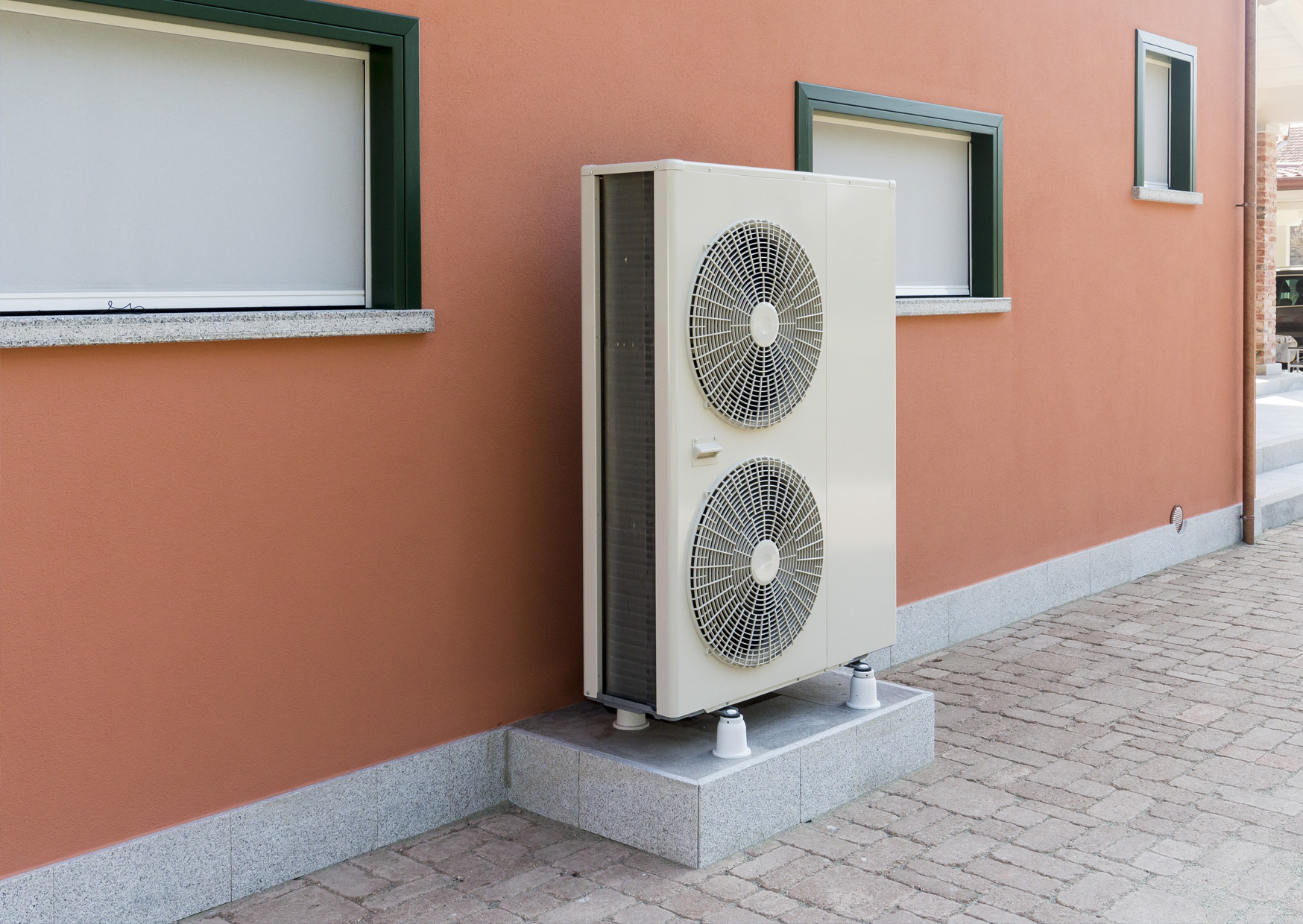Heat pump
Přečtěte si následující článek o tepelných čerpadlech a poté odpovězte na otázky.
- Jak se odlišuje tepelné čerpadlo od jiných způsobů vytápění?
- Jaká je účinnost klasického elektrického topení?
- Za jakých podmínek dosahuje tepelné čerpadlo největší účinnosti?
- K čemu kromě vytápění je možné tepelné čerpadlo použít?
A heat pump is a device used to warm and sometimes also to cool buildings by transferring internal energy from a cooler space to a warmer space using the refrigeration cycle. Using the heat pump, the energy flows in the opposite direction compared to the heat transfer that would take place without the application of external power.

Zdroj
The efficiency of a heat pump is expressed as a coefficient of performance (COP):
\[ \hbox{COP} = \frac{Q}{W} \]where
- \(Q\) is the useful heat supplied or removed by the considered system.
- \(W\) is the work required by the considered system.
Let’s see a typical example. An air source heat pump is operating at a COP of 3.5. It means that it provides 3.5 kWh of heat for each kWh of energy consumed. The output heat comes from both the heat source and the input energy; as a result, the heat source is cooled by 2.5 kWh. This is the reason why heat pumps are typically much more energy-efficient than simple electrical resistance heaters.
There are three main types of heat pumps based on the heat source used: air source heat pumps, ground source heat pumps and water source heat pumps.
Air source heat pumps are used to move heat between two heat exchangers, one outside the building and the other which either directly heats the air inside the building or heats water, which is then circulated around the building through heat emitters in order to release the heat to the building. These devices can also operate in a cooling mode. They can also be used to heat water for washing, which is stored in a domestic hot water tank. Air source heat pumps are relatively simple and inexpensive to install and have therefore been historically the most commonly used heat pump type.

Zdroj
A ground source heat pump draws heat from the soil or from groundwater which remains at a relatively constant temperature all year round below a depth of about 30 feet. Ground source heat pumps are more expensive to install due to the need for the drilling of boreholes for vertical placement of heat exchanger piping, or the digging of trenches for horizontal placement of the piping that carries the heat exchange fluid. But they are more efficient in comparison to air source heat pumps, because the temperatures underground are higher in winter and the COP depends strongly on the temperature difference (see the table).

Zdroj
A water source heat pump works in a similar manner to a ground source heat pump, except that it takes heat from the water rather than the ground. The body of water does, however, need to be large enough to be able to withstand the cooling effect of the unit without freezing or creating an adverse effect for wildlife.
(modified based on https://en.wikipedia.org/wiki/Heat_pump)

